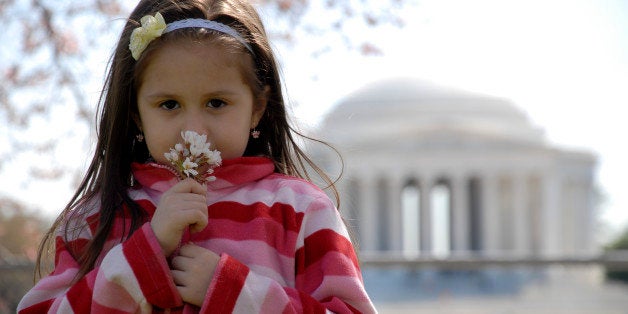
2015 brings historic leadership change to the District of Columbia, with a new mayor and three new council members taking office in January - and two more to be elected soon.
Here's one thing I hope they will keep top of mind: the future of our growing, vibrant city depends on making the District better for all children.
There are more than 100,000 children who call DC home. While that number has grown as our population has, new research confirms that many parents still leave the city once their children reach school age. And, many of the families who stay are struggling to afford the housing, quality schools and safe neighborhoods their children need to thrive.
How can DC's new and returning leaders move forward? The questions to answer are: what does a child-friendly city look like? And, what specifically can the government do to make more progress for all children?
There is some good news to build on. Our schools have made slow but steady progress for children, especially at the elementary school level. There are fewer children today in foster care than ever before. Because of our Medicaid program, more children than ever have access to a pediatrician - meaning, among other things, that we have a better chance of catching childhood illnesses and developmental delays early.
Still, tens of thousands of children are being left behind.
A third of our children live in neighborhoods with deep poverty. More than 2,000 District children are homeless. Over 1,000 children are still living in foster care without a permanent, loving family to raise them. And, far too many children have been traumatized by violence at home or in their neighborhoods. These are the children we see every day at Children's Law Center.
Where do we go from here?
It may seem surprising that no one person or agency is responsible for DC's children. Instead, our agencies are siloed today. The District's multiple education agencies think about academic achievement. The Child and Family Services Agency responds if there is an allegation of abuse or neglect within a family. The Department of Human Services provides some income support for poor families and also oversees homelessness. And the list goes on and on.
Historically, the efforts of these agencies have neither been coordinated nor comprehensive - and no one has made it a priority to step back to figure out how to help prevent children from falling into crisis.
This is a problem that can be solved.
As a start, Mayor Bowser should require every deputy mayor and agency director to report how they are meeting children's needs. She should ask her administration officials questions like:
- Are we providing safe public transportation for our children as they travel to their schools across the city, and is the system adequate for the numbers of children who use it?
- Are there enough safe spaces available for young people to hang out together when schools are closed in the evening or over holidays?
- Are we building enough affordable housing for our families, and are we ensuring this housing is right-sized for the families we have?
In addition, there are two deputy mayors who play a leading role in our children's lives: the Deputy Mayor for Education and Deputy Mayor for Health and Human Services. Their challenge is to break through their agency silos and ensure no vulnerable children are falling through the cracks.
The good news is that Mayor Bowser has recently appointed two dedicated and talented leaders in these positions. They should avoid the trap of thinking in terms of agency bureaucracy and start where the children are. For example, they should look for children whose families are chronically poor but are not yet homeless or being neglected. And, the teenagers who have dropped out of school and are at risk of sex trafficking. The deputy mayors should examine their agencies from this perspective and ask: who is responsible for providing support to these children? These are the kids who haven't touched a system but are at risk.
The truth is, the District remains a tough place to grow up for far too many children. And, if we leave these vulnerable children behind, we lose the opportunity to take advantage of their potential - not to mention, to give them a happy, stable childhood.
Fortunately, there are many District reforms and programs that are starting to work for our children but just need a more focused, sustained effort. Children's Law Center has many recommendations on how to move forward in the areas of child welfare, special education and children's mental health - and I will share some of these in part 2 of this blog.
In the meantime, I have high hopes that with renewed leadership, DC can make vulnerable children a higher priority. The cost of failure is too high for our families - and for all of us.
And, the District's children are waiting.
